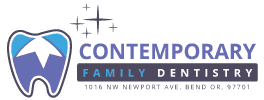Brushing and flossing are essential daily habits for maintaining good oral hygiene. These simple practices help prevent tooth decay, gum disease, and bad breath. However, you must perform these tasks correctly to maximize their effectiveness. This article will guide you to brush and floss your teeth, providing valuable tips and techniques for maintaining a healthy smile.
Introduction
Maintaining good oral hygiene is crucial for overall dental health. Brush and floss are the two primary activities that form the foundation of a solid oral care routine. By following the correct techniques, you can ensure that you remove plaque, bacteria, and food particles effectively.
The Importance of Brush and Floss
Brushing and flossing help remove plaque, a sticky film of bacteria that forms on the teeth. If left untreated, plaque can harden into tartar, leading to tooth decay and gum disease. Brushing twice daily and flossing once daily can significantly reduce the risk of these oral health problems.
Choosing the Right Toothbrush and Toothpaste
Choosing the right toothbrush and toothpaste is essential to maintain optimal oral hygiene. Look for a toothbrush with soft bristles that can easily reach all areas of your mouth. Select a fluoride toothpaste that suits your sensitivity, whitening, or gum health needs.
Proper Brushing Technique
Holding the Toothbrush
Hold the toothbrush at a 45-degree angle to your gums. This allows you to clean both the teeth and the gumline effectively.
Brushing in Circular Motions
Using gentle circular motions, brush your teeth’ outer and inner surfaces. This technique helps remove plaque and prevents damage to your gums.
Cleaning All Tooth Surfaces
Make sure to clean the chewing surfaces and the back of your teeth. Spend at least two minutes brushing your teeth thoroughly.
Brushing the Tongue
Don’t forget to brush your tongue gently. This helps eliminate bacteria and freshens your breath.
The Role of Dental Floss
While brushing cleans the surfaces of your teeth, flossing reaches the tight spaces between your teeth and along the gumline. It helps remove plaque and food particles that your toothbrush may miss.
Selecting the Right Dental Floss
Choose a dental floss that suits your preference and needs. You can opt for traditional floss, floss picks, or water flossers. The key is to find a method that you feel comfortable using consistently.
Correct Flossing Technique
Proper Floss Length
Cut a piece of floss about 18 inches long. Wind the ends around your middle fingers, leaving about 2 inches of floss between them.
Using the Right Technique
Gently guide the floss between your teeth using a back-and-forth motion. Curve the floss around each tooth in a C shape, reaching below the gumline.
Flossing Between Each Tooth
Move to a clean section of floss for each tooth. Ensure you floss both sides of every tooth, including the molars at the back of your mouth.
Being Gentle on the Gums
Avoid snapping the floss against your gums, which may cause irritation or bleeding. Use a gentle touch to protect your gum health.
Additional Oral Hygiene Practices
Apart from brushing and flossing, other practices contribute to optimal oral hygiene:
Mouthwash and Its Benefits
Using an antimicrobial mouthwash can help reduce bacteria and freshen your breath. Incorporate mouthwash into your routine after brushing and flossing for added protection.
Tongue Scraper for Fresh Breath
A tongue scraper can effectively remove bacteria and debris from the surface of your tongue. This can help improve your breath and overall oral health.
Regular Dental Check-ups
Schedule regular dental check-ups with your dentist to monitor your oral health and address potential issues. Professional cleanings are also essential to remove stubborn plaque and tartar.
Common Mistakes to Avoid
To ensure the best results from your oral care routine, avoid the following mistakes:
Overbrushing
Brushing too vigorously or for extended periods can damage your tooth enamel and irritate your gums. Be gentle yet thorough when brushing.
Neglecting the Gumline
Many people focus on brushing their teeth and forget about the gum line. Clean the area where your teeth meet your gums to prevent gum disease.
Rushing the Process
Take your time while brushing and flossing. Rushing can lead to inadequate cleaning and leave behind plaque and food particles.
Using the Wrong Flossing Technique
Using a sawing motion or snapping the floss can harm your gums. Follow the correct flossing technique mentioned earlier.
Neglecting Regular Dental Visits
Regular dental check-ups are crucial for early detection of oral health problems. Don’t skip your appointments, as they help maintain a healthy smile.
According to a survey among U.S. adults, relevant differences were reported by consumers with and without coverage when deciding to go to the dentist. It was reported that 85 percent of adults with insurance coverage visited the dentist at least once in 2022, while this rate dropped to 64 percent among adults without insurance.
Conclusion
Brushing and flossing your teeth correctly are essential habits for a healthy mouth. You can maintain strong teeth, healthy gums, and fresh breath by following the proper techniques and incorporating additional oral hygiene practices. Remember, consistency is critical to achieving optimal oral health. Don’t forget to schedule regular dental check-ups to keep your oral health in check. Take care of your teeth and gums; they will serve you well for a lifetime.
Frequently Asked Questions (FAQs)
FAQ 1: How often should I brush my teeth?
Brushing your teeth at least twice daily, in the morning and before bed, is recommended.
FAQ 2: Is it better to brush before or after meals?
It is generally advised to wait about 30 minutes after a meal before brushing to allow saliva to neutralize acids in the mouth. However, regular brushing is more important than the timing.
FAQ 3: Can I use an electric toothbrush?
Yes, electric toothbrushes can be effective in removing plaque. Follow the manufacturer’s instructions for optimal use.
FAQ 4: Is flossing necessary if I brush regularly?
Flossing is essential as it reaches areas your toothbrush cannot, such as the tight spaces between your teeth and along the gumline.
FAQ 5: What if I experience bleeding gums while brushing or flossing?
Bleeding gums may indicate gum disease or improper technique. Be gentle, and continue to brush and floss regularly. If the bleeding persists, consult your dentist for an evaluation.



